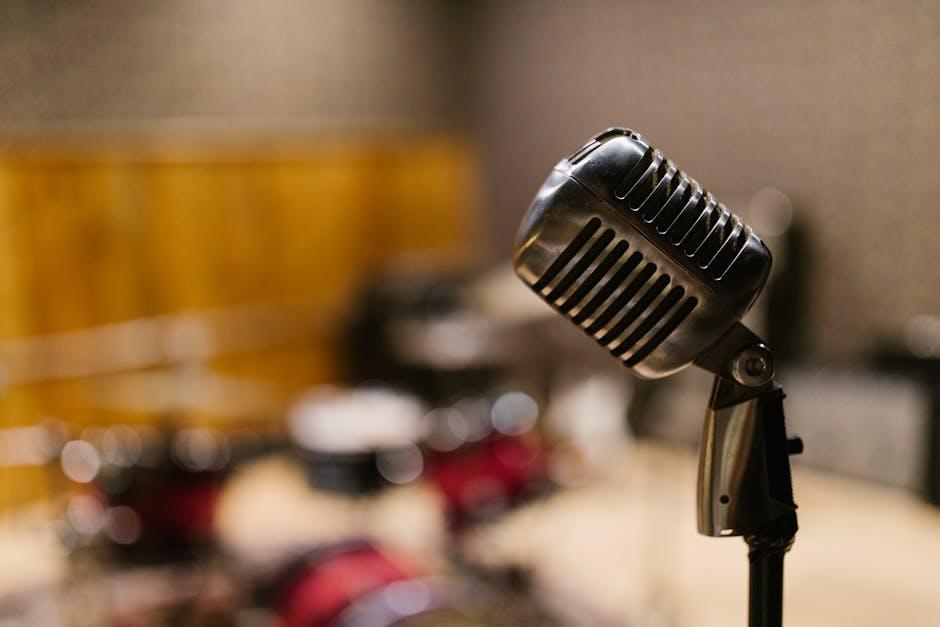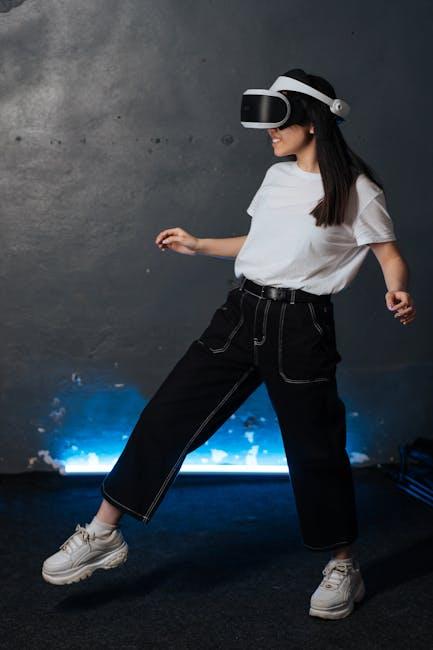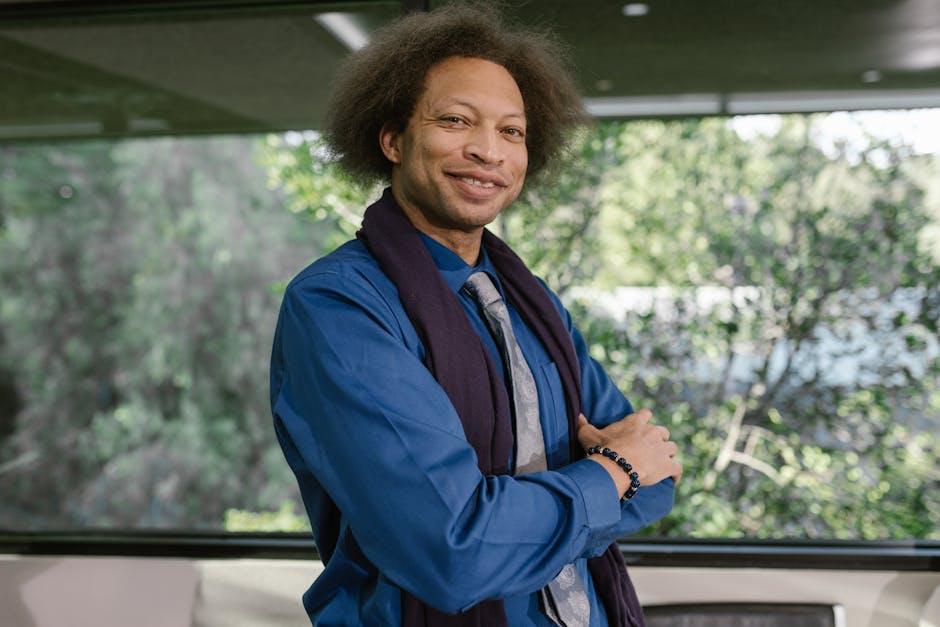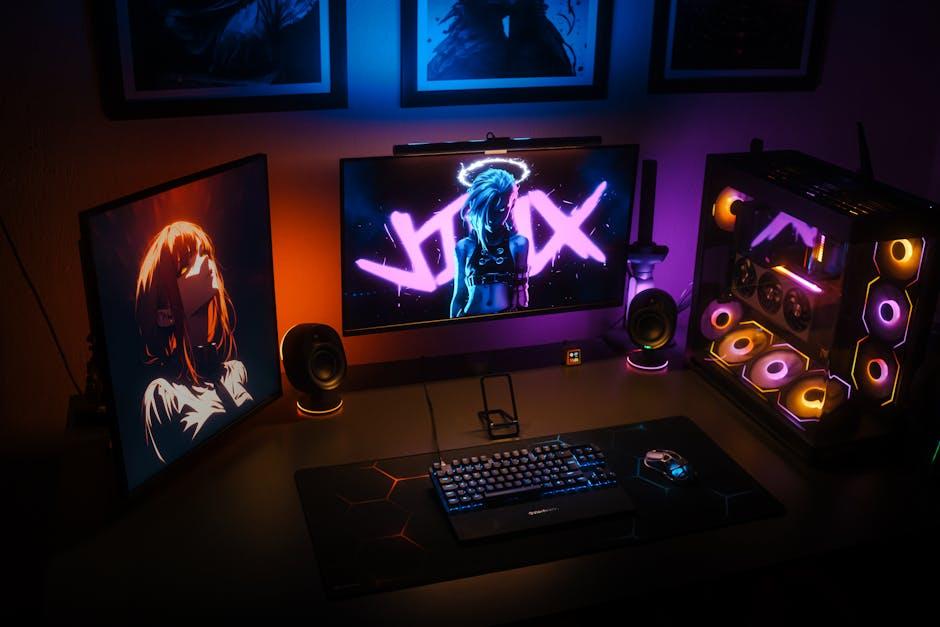In the symphony of human experience, concerts have long served as vibrant crescendos—moments where music breathes life into spaces, uniting audiences in shared emotion. Yet, as technology advances at an unprecedented pace, it reshapes not only how these performances are delivered but also how they are perceived and remembered. From the rise of immersive virtual reality stages to real-time live streaming that transcends geography, technology is composing a new movement in the evolution of concerts. This article explores the multifaceted impact of technological innovation on live music events, uncovering the ways it transforms the connection between artist, audience, and the very essence of the concert experience.
Table of Contents
- The Evolution of Live Music Experiences Through Technology
- Enhancing Audience Engagement with Interactive Digital Tools
- Sound Quality Innovations Transforming Concert Atmospheres
- The Role of Virtual and Augmented Reality in Expanding Accessibility
- Challenges and Ethical Considerations in Tech-Driven Concerts
- Strategies for Artists and Organizers to Embrace Technological Advances
- Q&A
- The Conclusion

The Evolution of Live Music Experiences Through Technology
The integration of cutting-edge technology has transformed live music events from simple performances into immersive, multi-sensory experiences. From the introduction of advanced sound engineering to state-of-the-art visual effects, audiences now find themselves enveloped in a world where music transcends auditory boundaries. Modern concerts frequently feature interactive LED installations, 360-degree video mapping, and augmented reality, inviting fans to become part of the spectacle rather than mere observers. This fusion of technology with artistry not only elevates the concert vibe but also enhances emotional connection, making each show a unique narrative told through sight, sound, and sensation.
Moreover, the role of technology extends beyond the stage, influencing how fans engage before, during, and after shows. Tools such as mobile apps and social media platforms offer personalized schedules, exclusive content, and seamless ticketing experiences, creating a connective thread between artist and audience. Some innovative features include:
- Virtual meet-and-greets enabled by VR, bridging geographic gaps
- Real-time crowd interaction through live polling and song requests
- Wearable tech syncing with music to deliver haptic feedback
These advancements have redefined audience participation, fostering a vibrant community that thrives on instant connectivity and shared experiences. Below is a quick comparison of key technologies shaping live music experiences:
| Technology | Function | Impact on Experience |
|---|---|---|
| Augmented Reality (AR) | Overlay digital elements on live performances | Enhances visual storytelling |
| Wearable Tech | Provides tactile feedback synchronized with music | Deepens sensory immersion |
| Live Streaming | Broadcast events globally in real time | Expands audience reach |
| AI-Driven Visuals | Generate adaptive stage effects | Creates dynamic and personalized shows |

Enhancing Audience Engagement with Interactive Digital Tools
Modern concerts have transcended the traditional passive experience, inviting fans into an immersive world through interactive digital tools. These technologies empower audiences to influence light shows, setlists, and even virtual stage effects in real-time, creating a personalized concert experience. Mobile apps synchronized with live performances allow fans to vote on encore songs or participate in live polls, transforming passive spectators into active contributors. This real-time interaction fosters a strong connection between artists and attendees, cultivating a community that thrives on mutual engagement.
Beyond smartphone apps, innovations such as augmented reality (AR) glasses and holographic projections amplify the sensory experience, making concerts not just something to watch but something to live within. The table below highlights a few key interactive tools currently reshaping live music events:
| Tool | Description | Audience Impact |
|---|---|---|
| Live Polling Apps | Fans influence setlists and encores | Increased participation |
| AR Headsets | Overlay digital effects on live shows | Enhanced immersion |
| Interactive Light Wands | Audience controls lighting patterns | Collective creativity |
| Virtual Meet & Greets | Digital fan-artist interactions | Personalized connections |
- Real-time feedback loops encourage artists to adapt performances dynamically.
- Shared digital experiences foster community among physically dispersed fans.
- Data collection through interaction provides insights for future show enhancements.

Sound Quality Innovations Transforming Concert Atmospheres
In recent years, advancements in sound technology have redefined how audiences experience live music. Spatial audio systems now envelop concertgoers in a 3D soundscape, allowing every note to resonate from multiple directions, creating an immersive environment that traditional stereo setups simply can’t match. These innovations not only enhance the clarity and depth of sound but also adapt dynamically to venue acoustics, ensuring optimal audio performance no matter the size or shape of the space.
Moreover, modern digital signal processing (DSP) enables sound engineers to fine-tune frequencies and reduce noise with unprecedented precision. This has led to breakthrough devices like real-time audio analyzers and smart mixers that can anticipate and correct distortions mid-performance. Below is a comparison of traditional versus innovative sound features commonly used in today’s concerts:
| Feature | Traditional Setup | Innovative Setup |
|---|---|---|
| Sound Projection | Stereo Speakers | Spatial & 3D Audio |
| Audio Adjustment | Manual Equalizers | AI-Powered DSP |
| Noise Management | Basic Filters | Real-Time Adaptive Filters |
| Audience Immersion | Fixed Audio Zones | Dynamic Sound Mapping |
- Reduced feedback and echo through smarter sound dispersion
- Personalized listening experiences via in-ear monitoring systems
- Enhanced energy and engagement with synchronized audio-visual interfaces

The Role of Virtual and Augmented Reality in Expanding Accessibility
Virtual and augmented reality have revolutionized the way audiences experience live music, particularly for those who face physical, geographical, or financial barriers. These immersive technologies break down traditional limits by delivering concerts directly to a user’s living room, transforming any environment into a personalized venue. Attendees can interact with artists and other fans in virtual spaces that replicate the dynamic atmosphere of a live event—allowing front-row views and 360-degree perspectives previously unattainable. Additionally, they offer tailored accessibility options like adjustable visuals, subtitles, and spatial audio customization, ensuring all fans can enjoy the performance in their own way.
Key benefits include:
- Accessibility for differently-abled individuals – custom interfaces and adaptive controls enhance inclusivity.
- Global access – no need for physical travel, reducing cost and carbon footprint.
- Enhanced social interaction – audience members can engage with one another and the artist in real-time.
| Feature | Traditional Concerts | VR/AR Concerts |
|---|---|---|
| Accessibility | Limited by venue location and physical constraints | Available worldwide with custom accommodations |
| Audience Interaction | Passive, limited to applause and cheering | Active, immersive, multi-directional engagement |
| Visual Experience | Fixed stage view from the seat | Dynamic perspectives with 360° immersion |

Challenges and Ethical Considerations in Tech-Driven Concerts
As concerts increasingly integrate cutting-edge technology, organizers encounter a myriad of complex challenges that extend beyond mere logistics. The reliance on advanced systems such as augmented reality (AR), virtual reality (VR), and AI-powered sound design requires robust infrastructure and technical expertise, often stretching budgets and timelines. Additionally, there’s the persistent risk of technical failures or cyberattacks, which can disrupt performances and negatively impact audience experience. Ensuring accessibility for all attendees, including those with disabilities, remains a crucial hurdle as technology can sometimes unintentionally create barriers rather than inclusivity.
Ethical concerns also emerge prominently within tech-driven concert environments. Issues around data privacy, especially when leveraging facial recognition or biometric tracking for crowd management, raise important questions about consent and transparency. Moreover, the environmental footprint of these high-tech setups prompts reflection on sustainability practices in an industry traditionally associated with significant energy consumption. The rapid pace of innovation demands a balanced approach, where excitement for new possibilities is tempered by a commitment to respect user rights and environmental responsibilities.
- Technical reliability vs. innovation risks
- Accessibility challenges in immersive tech
- Privacy concerns with data tracking
- Environmental impact of tech installations

Strategies for Artists and Organizers to Embrace Technological Advances
Artists and organizers can unlock unprecedented opportunities by integrating cutting-edge technology into their events. Utilizing augmented reality (AR) and virtual reality (VR) can create immersive concert experiences that transcend physical boundaries, inviting fans from across the globe to join in real-time or on-demand. Additionally, leveraging data analytics enables performers to personalize setlists and stage production according to audience preferences and trending styles, enhancing engagement. Collaborating with tech startups for innovative lighting, soundscapes, and interactive apps can also provide a competitive edge and deepen connection with attendees.
- Integrate live-streaming platforms to reach wider audiences beyond venue capacity
- Adopt blockchain technology for transparent ticketing and fan reward systems
- Explore AI-generated visuals or music to add unique dimensions to performances
- Use social media analytics for targeted marketing and community building
| Technology | Benefit | Example Application |
|---|---|---|
| Virtual Reality | Immersive fan experience | Virtual backstage tours |
| Blockchain | Secure ticketing | Fraud-resistant digital tickets |
| AI Analytics | Personalized shows | Dynamic setlists based on audience mood |
Q&A
Q: How has technology transformed the concert experience for audiences?
A: Technology has revolutionized concerts by enhancing audio-visual effects, enabling immersive experiences through LED screens, 3D projections, and sophisticated sound systems. Audiences now enjoy crystal-clear sound, dynamic lighting, and interactive visuals that create a captivating atmosphere far beyond stationary performances of the past.
Q: In what ways has technology changed how artists perform?
A: Artists leverage technology to expand their creative toolkit. From live looping and digital instruments to synchronized light shows and augmented reality elements, technology allows performers to push artistic boundaries, blend genres, and deliver unique, multi-sensory shows tailored to each venue.
Q: What impact has streaming and virtual concerts had on live music?
A: Streaming and virtual concerts have broadened access to live music, enabling fans worldwide to participate without geographical constraints. While virtual events may lack the physical energy of in-person gatherings, they offer interactivity, convenience, and new monetization models, making live music more inclusive and innovative.
Q: Does reliance on technology affect the authenticity of live concerts?
A: This is subjective. Some argue technology can sanitize or overproduce shows, distancing audiences from raw performances. Others believe it enhances authenticity by amplifying artistic vision and connecting fans in novel ways. Ultimately, technology is a tool—its impact on authenticity depends on how thoughtfully it’s integrated.
Q: How has ticketing technology evolved to improve concert accessibility?
A: Digital ticketing platforms have streamlined purchases, reduced scalping through blockchain or verified resale systems, and introduced contactless entry. These advancements make attending concerts safer, quicker, and more equitable, ensuring genuine fans gain access while organizers better manage crowd flow and security.
Q: What future technological trends could further influence concerts?
A: Emerging technologies like virtual reality (VR), augmented reality (AR), artificial intelligence (AI) in set design, and personalized audio experiences via biometric feedback promise to deepen immersion. Additionally, holographic performances and AI-generated visuals could blur boundaries between physical and digital concert realms, redefining how music is experienced live.
The Conclusion
As the final chord fades and the lights dim, it’s clear that technology’s imprint on concerts is as transformative as it is enduring. From immersive visuals to seamless ticketing, the fusion of innovation and live music has redefined the concert experience, bridging gaps between artists and audiences in ways once unimaginable. While the essence of live performance remains rooted in human connection and shared emotion, technology continues to serve as both a catalyst and companion—inviting us to reimagine what it means to gather, to celebrate, and to be moved by music. In this ever-evolving harmony between sound and science, the future of concerts promises to be as dynamic and inspiring as the songs that fill the air.

